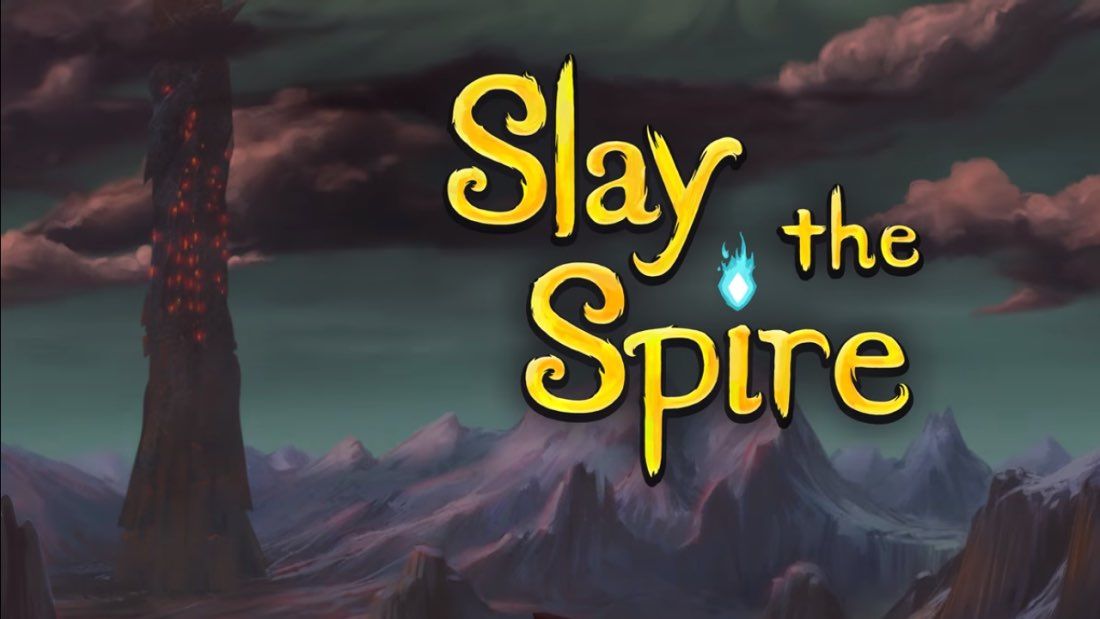Slay the Spire - Switch Review

Slay the Spire is a turn-based roguelike with card game elements. Build the best deck that you can put together and fight your way up an ever-changing Spire that provides each playthrough with its own challenges, enemies and boss battles.
Gameplay
Slay the Spire’s turn-based card game mechanics has you using cards to attack, block, and give yourself or the enemy buffs and effects. During the opening few hours, I was initially disappointed that there were only three characters to play as, but their slight nuances ended up generating a surprising amount of contrast in play style.

The game’s difficulty is very well balanced, making it a pleasant game for all levels of experience. Your first playthrough is easy enough for you to pick up the mechanics as you encounter them and not feel overwhelmed, but the difficulty ramps up considerably, requiring you to learn how to build your deck strategically.
However as with all card games, there is an element of chance. No matter how many Block cards you have, you will inevitably be left with none in your hand at precisely the wrong moment, and it only takes a couple of bad hands in a row to ruin an entire run. While I don’t think this is entirely unfair, it would have been good to make your deck more customisable from the beginning as well as during play so that you have the option of playing safer or riskier as per your wont.
Rewards are interesting and satisfying – after each battle you choose one of three new cards, giving you more strategic options. This allows the gameplay to branch out, making each playthrough different and unique. Despite the main plot only lasting approximately ten hours, if you really wanted to enjoy all that Slay the Spire has to offer, you could easily crack over 100 hours of playtime.

There is great variety in the effects of cards and items you collect during a run, which can have a huge impact on how you approach battles; a simple but great example being the Anger card, which replicates itself each time you attack with it, making it more and more likely you will draw it in a later turn, effectively replicating the process of becoming beside oneself with rage as you eventually end up with a hand of nothing but Anger with no strategic options left. This variety keeps the player thinking ahead, making the gameplay much more engaging and strategic.
Enjoying our Slay the Spire Switch review so far? Don’t forget to like us on Facebook and follow us on Twitter for more Nintendo Switch content. Also, please consider supporting us on Patreon so that we can continue to do what we love doing.
Unlockables are not too far between, so even if you’re as bad at games as I am, you still feel like you are making progress even when you die and start a new playthrough. The randomness and variety of enemy encounters and loot drops also motivated me to keep trying.
In terms of HD Rumble, it doesn’t do anything groundbreaking, the Joy-Cons/Pro Controller simply vibrates when you strike an enemy or are stricken. This creates engaging tactile feedback, bringing life to the game and allowing you to feel the power of your (or your enemy’s) attacks.
Story
The story of Slay the Spire is pretty much entirely defined by your personal playthrough. The only characterization to speak of are the sentence-long biographies for each of the playable characters, slight bits of dialogue given to some of the enemies, and most memorably, to the shopkeeper, who randomly says things like, “I like your haircut”, while you wonder what to buy. As previously mentioned, this is another way that allows the player to get the most out of Slay the Spire, making it a game that you can spend days, weeks and even months delving into.

Graphics / Art Direction
The game’s graphics are generally fine. There’s a great amount of variety in monster designs, from your bandits, mages, slugs and so on, through to be-tentacled monsters, abstract polygonal creatures reminiscent of Evangelion’s Angels. Animations are fairly limited however, and the background art varies in quality. There’s one inexplicably ugly screen used when you visit a Campfire to rest or upgrade one of your cards. It stands out from the rest of the game’s graphical style and genuinely looks like bad digital fanart from Deviant Art.
Playing in handheld mode is a little difficult, as the colours are generally dark, so even playing on public transport makes it hard to see things like buff/debuff icons and other visual indicators. The text is also quite small, obviously designed for a PC monitor, which adds to the problem.

Music / Sound Design
The soundtrack is well orchestrated, using good quality libraries that make it occasionally sound like live recordings, with the occasional synthetic touch. Themes are memorable and used meaningfully, but no track is a standout. There is a slight Tim-Burton-feel to the orchestration and chord progressions which gives the game a sinister and mysterious, but also curious and light-hearted atmosphere which suits the graphical style really well.
Final score: 75%
Slay the Spire takes card-based battle mechanics and adds a level of mechanical depth that will have you playing for days. Despite the element of chance taking control from the player’s hands, the engaging gameplay, deck-building variety and roguelike elements allows you to get the most bang for your buck.
Thank you for checking out our Slay the Spire Switch review and thank you to our $5 and up Patreon Backers for their ongoing support:
- Andrew Caluzzi (Inca Studios / Camped Out!)
- Belinda Cubitt
